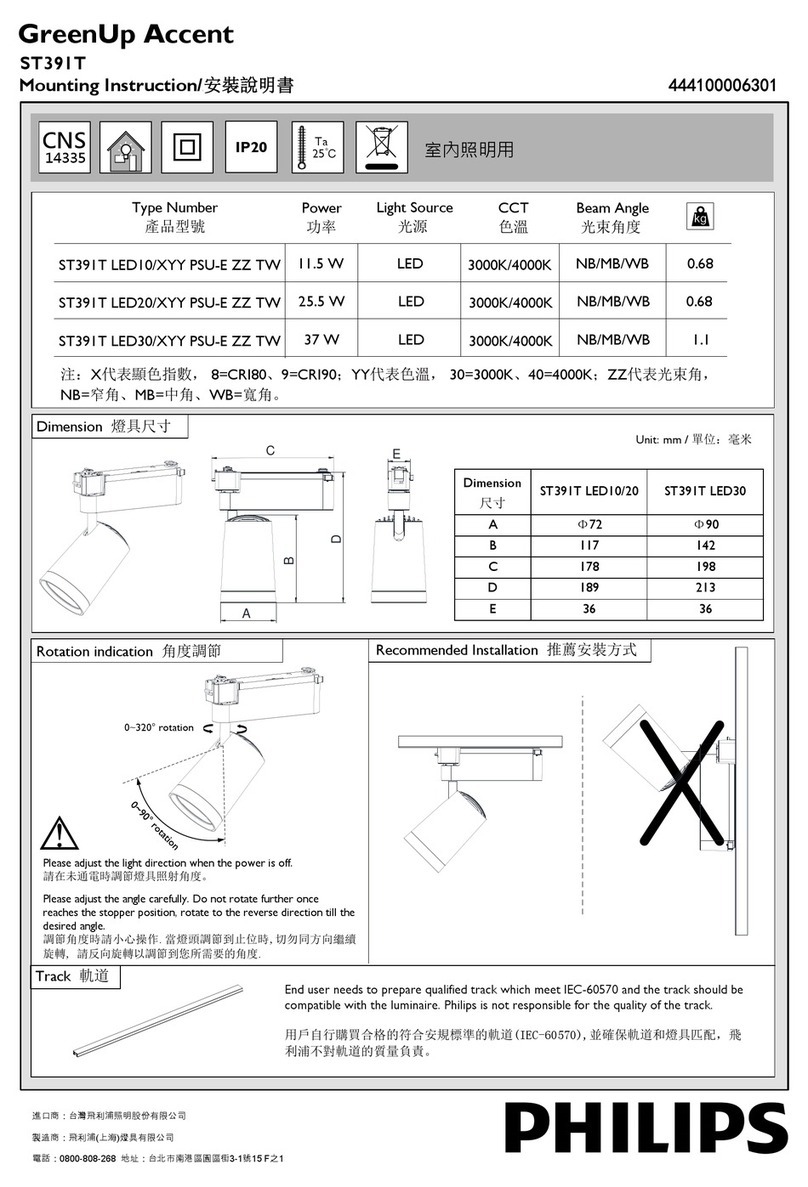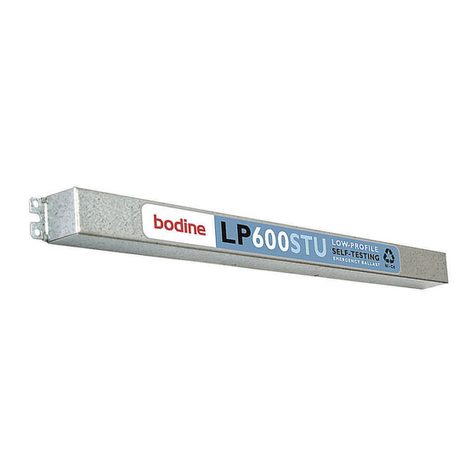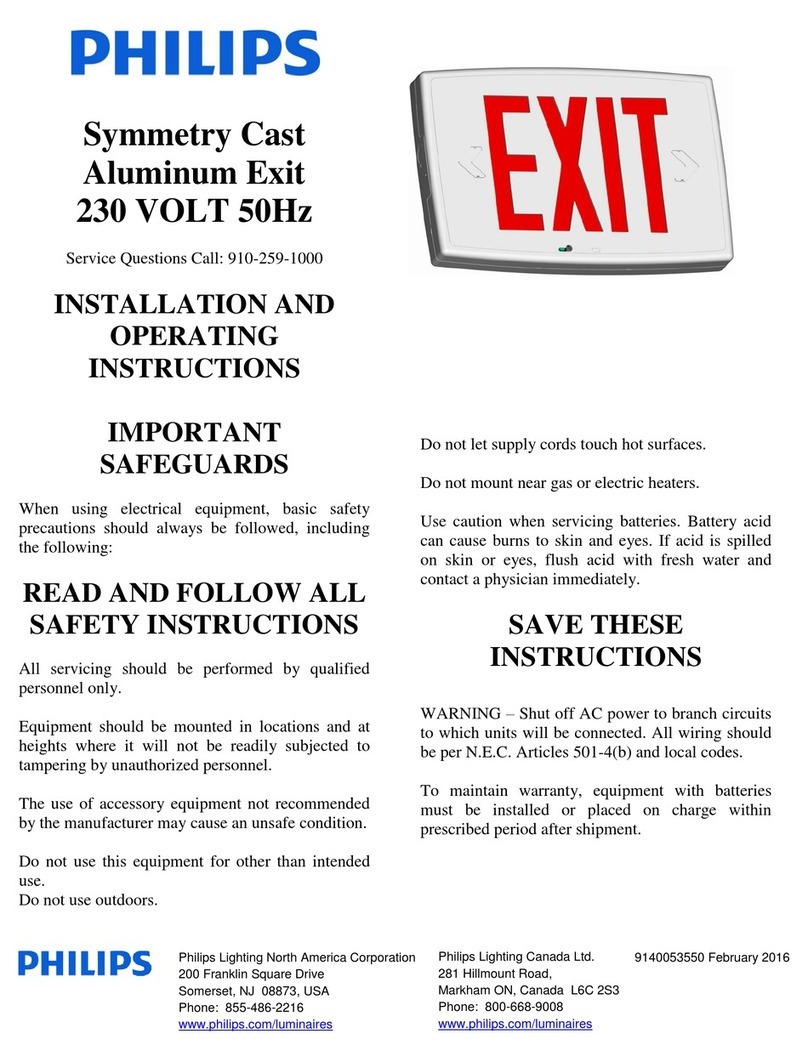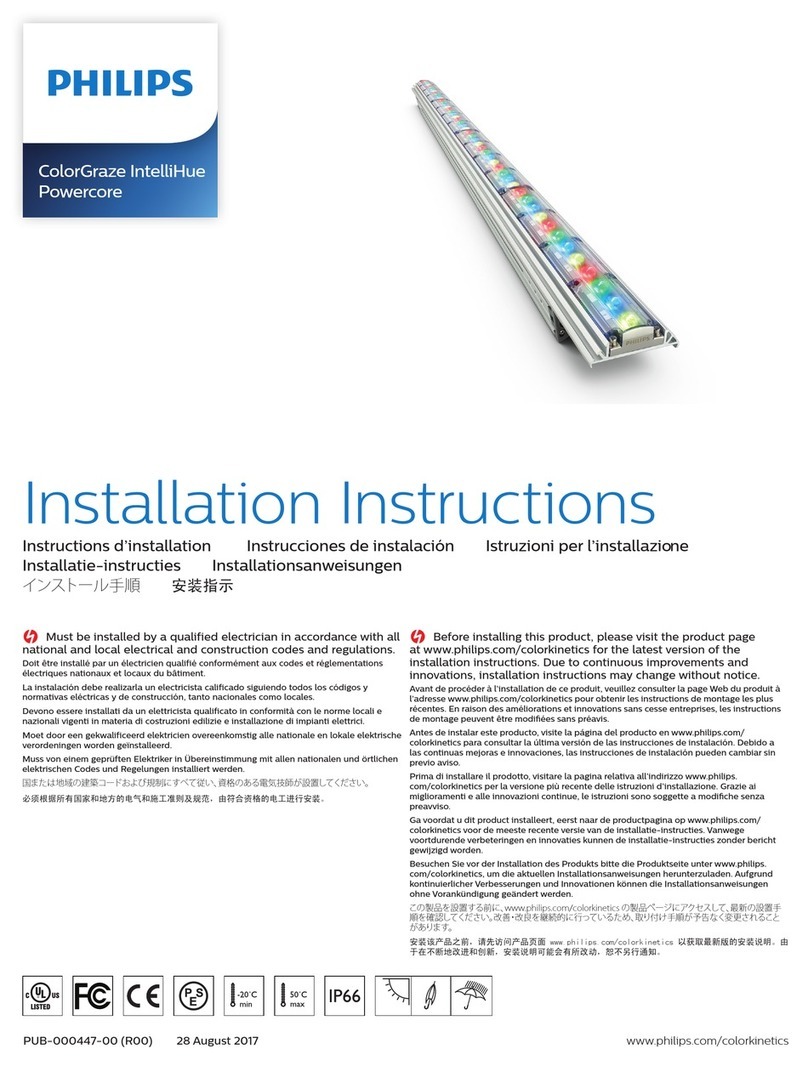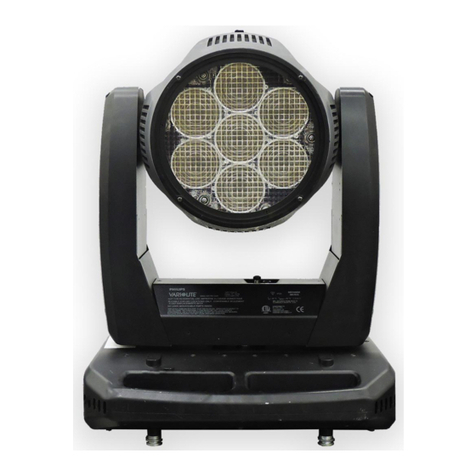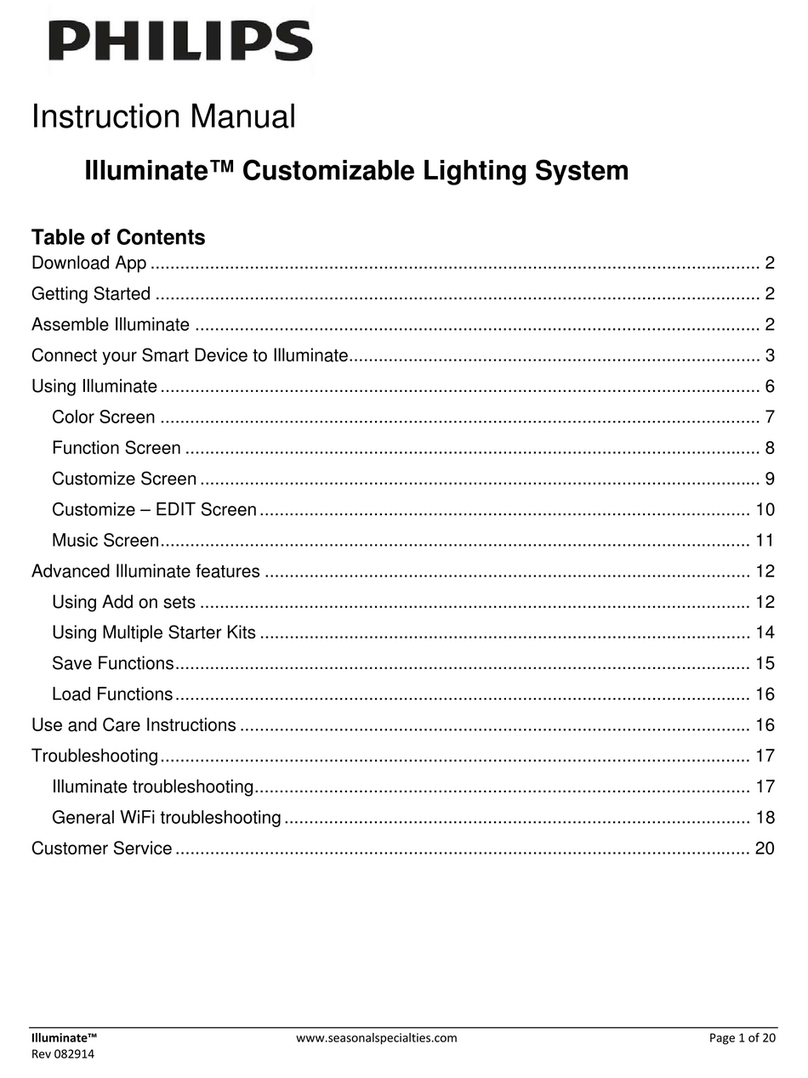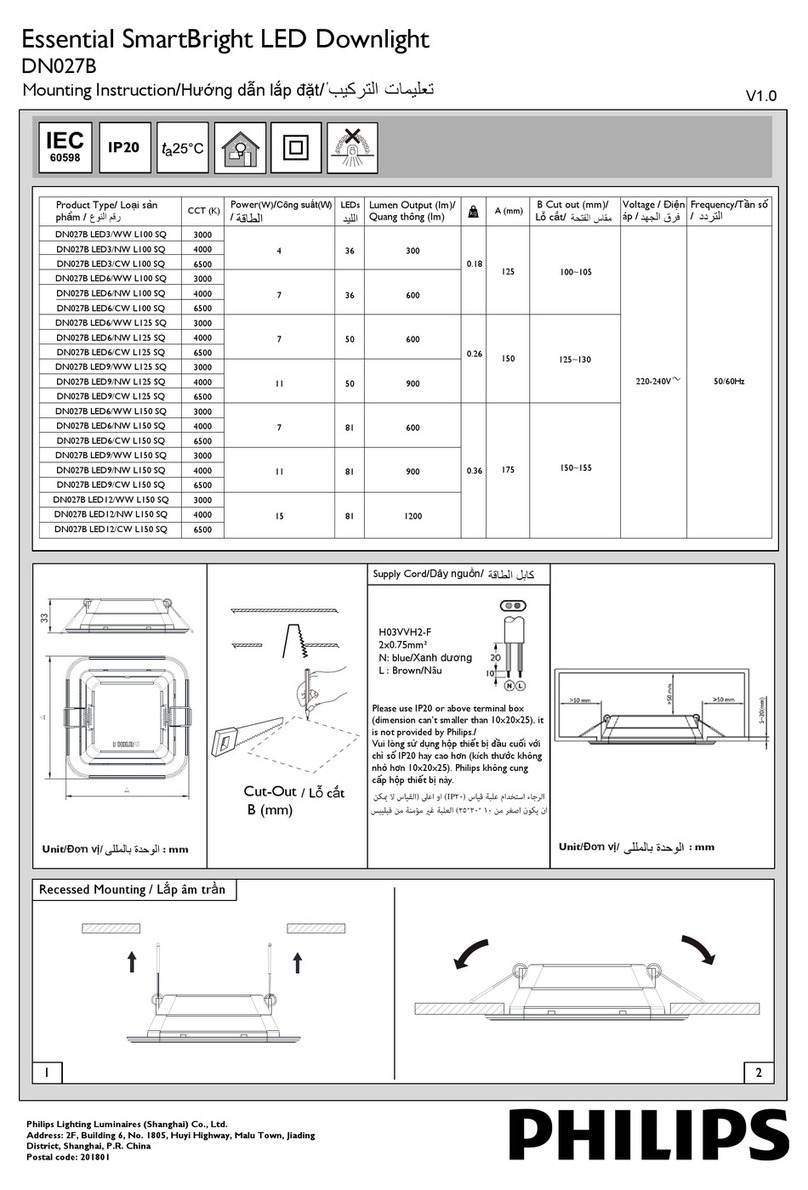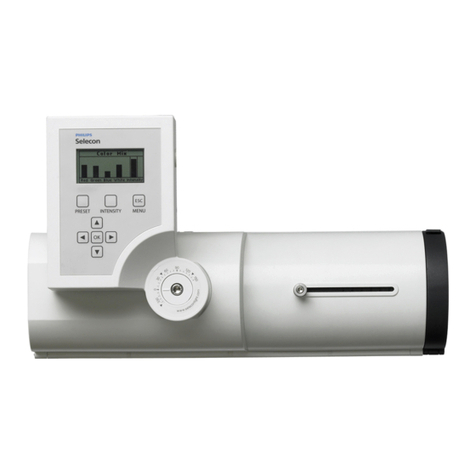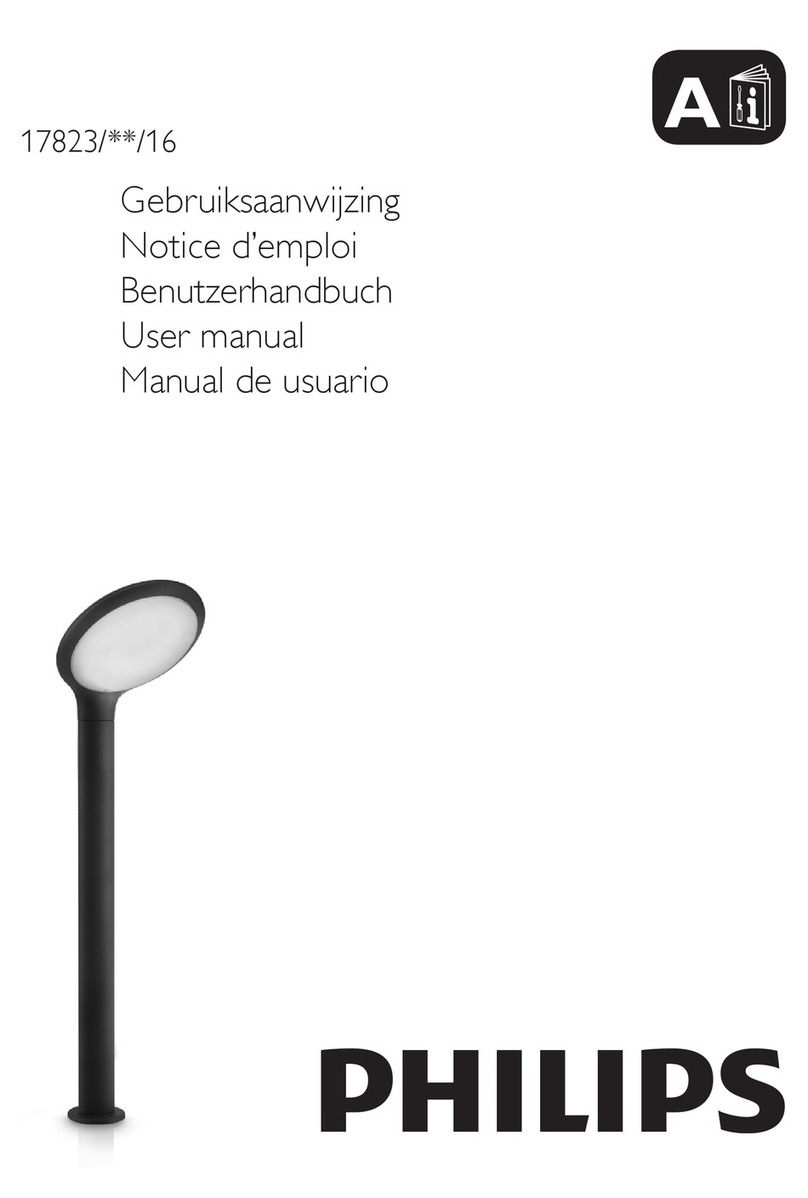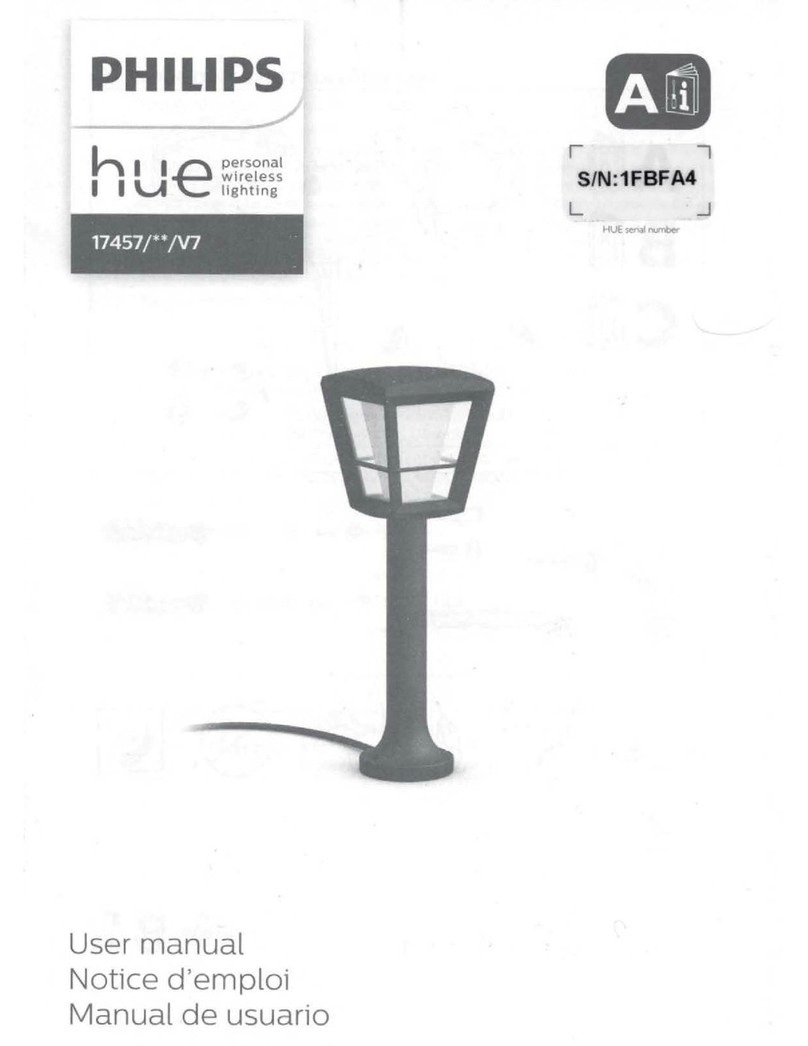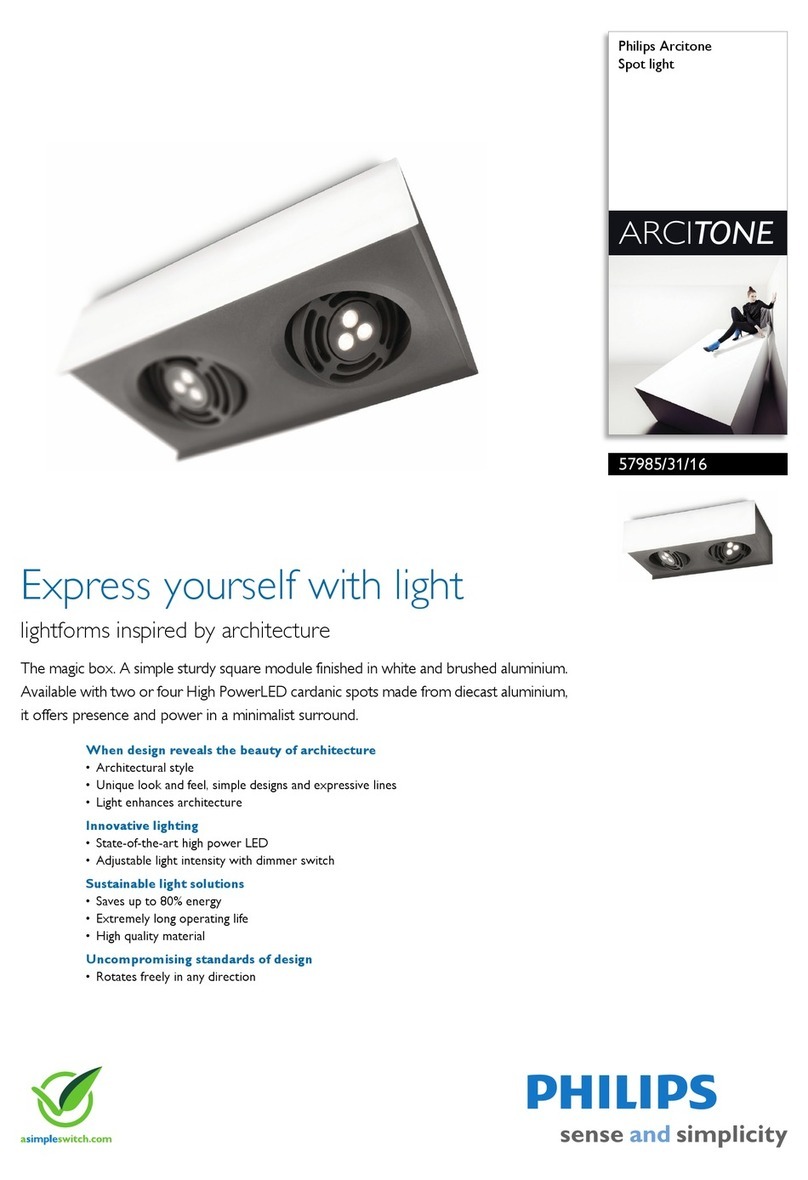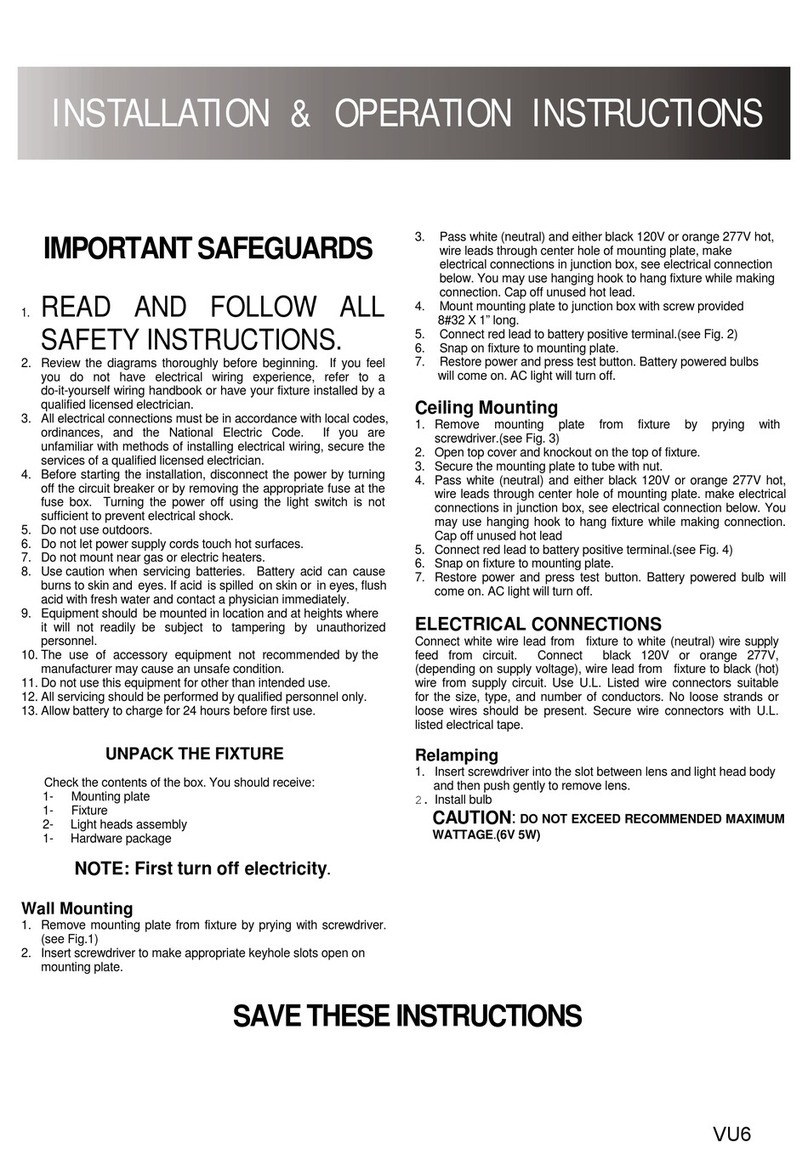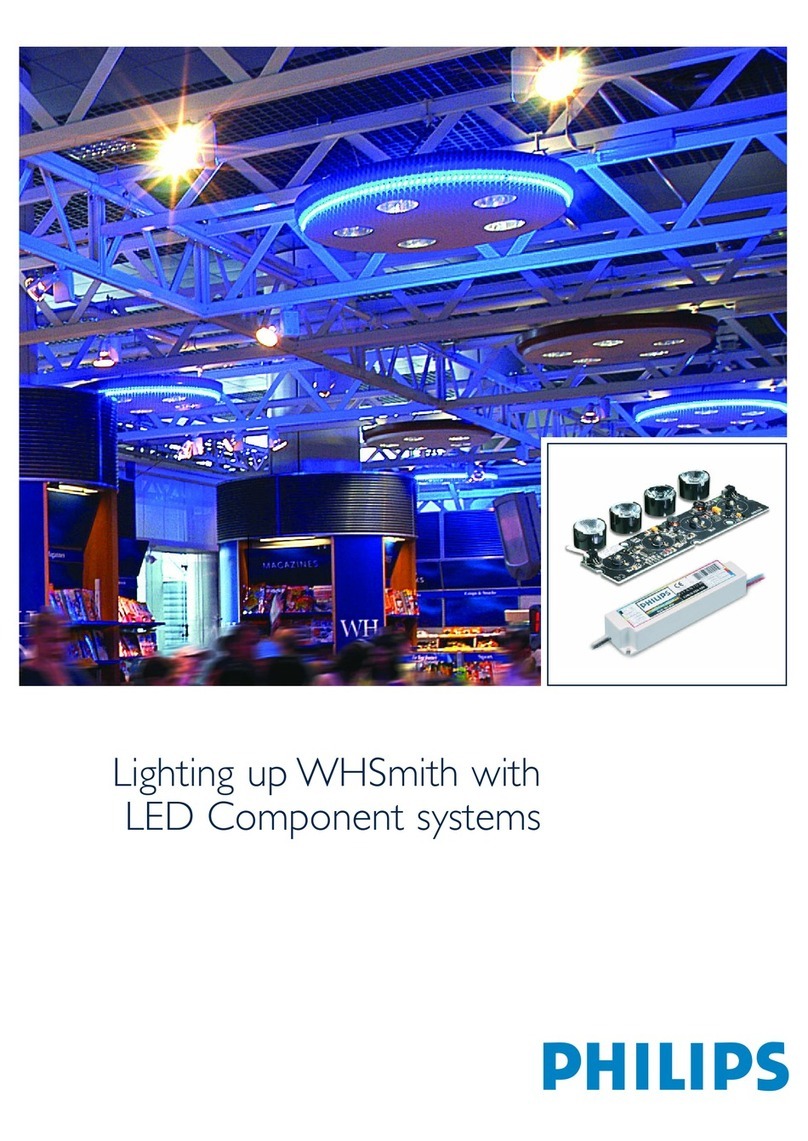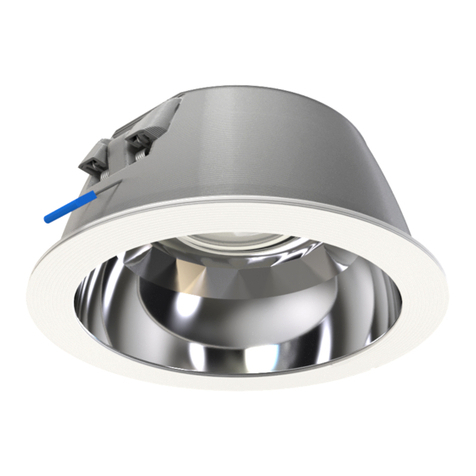INST
ALL
A
TION
INSTRUCTIONSWALL (BACK) MOUNT
Open front cover using a flat-head screwdriverby pressing the tab on the side of the unit in to release;see Fig.1.
Remove main knockout hole in back housing and appropriate outlet box pattern knockout; see Fig. 2 - if needed, loosen screws holding battery in place (see Fig. 3) and
remove battery.
Route AC service wires through main knockout hole in back housing. Mount back housing to outlet box using screws. See Fig. 2.
Make AC service connection at this time. See OPERATING INSTRUCTIONS below.
Replace the cover and snap tabs into place; see Fig. 1.
INSTRUCTIONS CEILING MOUNT
Open front cover using a flat-head screwdriverby pressing the tab on the side of the unit in to release;see Fig.1.
Remove main knockout hole in back housing and appropriate ceiling mounting knockouts; see Fig. 2 - if needed, loosen screws holding battery in place (see Fig. 3) and
remove battery..
Route AC service wires through main knockout hole in back housing. Mount back housing to ceiling/surface box using screws. See Fig. 2.
CAUTION: (2) Screws must be used to mount the back-plate to the ceiling surface with suitable hardware to prevent sag
and/or
the unit
falling.
Make AC service connection at this time. See OPERATING INSTRUCTIONS below.
Replace the cover and snap tabs into place; see Fig. 1.
INSTALLATION CONTINUED
INSTRUCTIONS LAMP REPLACEMENT -
Disconnect
power before
re-lamping.
CTX -Open lens using a small flat-head screwdriver by gently releasing the tab on the corner of the lamp head; see Fig. 1. Replace lamp,
snap cover back into place.
CAX-Open front cover (see instructions above), disconnect lamp from the diagnostic charger board. Using an opened paper clip,
release the lamp retaining ring; see Fig. 4. Replace with new lamp. Reinstall retaining ring and connect new lamp to diagnostic charger
board. Snap cover back into place.
REMOTELAMP HEAD HOOKUPINSTRUCTIONS (If remote
capability
is
available)
NOTE: Observe output rating and do not exceed maximum load
combining
all lamp
connections.
1. The Maximum total watts on L1 or L2 must not exceed replacement lamp wattage listed on Nameplate for all CAX/CTX units.
2. The remote lamp connection (REMOTE) may not exceed the output rated maximum minus the output on L1 & L2.
3. Do not short the lamp leads to ground.
Failure to
properly
follow
conditions
stated above may result in damage to the unit and void the unit's
warranty
.
NORMAL POWER-UP SEQUENCE
CTX
Lens
Release
Tab
(push in)
Outlet Box
Ceiling Mounting holes
Transformer
Locations
Main
Ceiling Mounting holes
Paperclip
CAX
Retaining
Ring
APPLY
ALL INDICATOR
LEDs FLASH 6
TIMES
CAX CTX
SELF-TESTING / SELF-DIAGNOSTIC
Fig. 1
CTX
Knockouts
Lead Acid
CTX
Battery Screws
Knockout
Fig. 2 CAX
Battery Screws
Outlet Box
Knockouts Fig. 4
CAX EMERGENCY LAMPS
BRIEFLY ON The unit willself-test approximately
every 30 days for a minimum of 30
minutes.
Battery Strap
Lead Acid
Battery
Fig. 3a
Wire harness
Fig. 3
Battery
Integration
Board
Fig. 3b
Ni-Cad
Battery
Ni-Cad
Battery Strap
GREEN STATUS - ON
Battery Charging
BATTERY INDICATOR
FLASHING
Y
BATTERY DIAGNOSTIC INDICATOR FLASHING AFTER POWER-UP:
1) Most likely the Battery is not connected. Verify that the Battery is connected to the diagnostic charger
board.
2) If the Battery is connected, wait for 72 hours to charge the Battery. After 72 hours, if the Battery
indicator LED is flashing, the Battery is faulty and needs to be replaced.
3) After Battery replacement, the Battery indicator LED will stop flashing within approximately 10 to 20-
sec.
OPERATING INSTRUCTIONS
1. Connect AC supply wires to transformer leads and push through knockout into outlet or ceiling/surface box. Observe the wire colors.
BLACK wire 120 volt AC input.
WHITE wire common or neutral for 120 or 277 volts AC input. RED wire
277 volt AC input.
CAUTION: CAP ALL UNUSED BLACK OR RED WIRES TO PREVENT SHORTING OR ELECTRICAL SHOCK.
Note: when all wiring connections are made, push wires thru knockout into outlet box.
2. Battery Connections:
Lead
Acid
a. If needed, Place battery into back housing, secure using strap and (2) screws; See Fig. 3a.
b. Connect the red and black wire with the 2-pin connector from battery to the BATT location on the diagnostic charger board inside front cover. (See WIRING
INFORMATION on back page)
Ni-Cad
a. If needed, Place battery into back housing, secure using strap and (2) screws; See Fig. 3b.
Note: If there is only one Ni-Cad battery pack, connect the red and black wire with the 2-pin connector from battery to the BATT location on the diagnostic charger
board inside front cover. Continue to step 3.
b. Connect the red and black wires with the 2-pin connectors from batteries into the battery integration board 2-pin connectors.
c. Connect the red and black wire harness from battery integration board to the BATT location on the diagnostic charger board inside front cover.
3. Connect the red and white wire with the 2-pin connector from transformer to XFMR connector on the diagnostic charger board on inside of front cover.
4. Energize AC power to equipment and check the unit using the POWER-UP SEQUENCE (see next page). Leave AC connected for a minimum of 72 hours to
charge battery before performing normal operation/manual tests.
N
LAMP
INDICATOR
FLASHING
N
CHARGE
INDICATOR
FLASHING
N
ALL 3
RED
N
TO NORMAL
OPERATION
LAMP DIAGNOSTIC INDICATOR FLASHING AFTER POWER-UP:
1) Verify that the lamps are connected to the diagnostic charger board. Check the remote lamp if unit is
equipped with remote option.
2) Push the green test switch once to test. All emergency lamps should turn on briefly, if not, replace the
faulty lamp(s).
Y
NOTE: If unit is equipped with remote option, and the remote pigtail (4-pin connector with 2 wires) is
connected to the diagnostic charger board but is not connected to a remote load, the Lamp Indicator
LED will flash. Either connect a load to the remote pigtail or disconnect it from the diagnostic charger
board.
Y
CHARGER DIAGNOSTIC INDICATOR FLASHING AFTER POWER-UP:
1) Indicates a faulty diagnostic charger board that must be replaced.
ALL 3 DIAGNOSTIC INDICATORS FLASHING AFTER POWER-UP:
Y
1) Verify that the lamps and the Battery are connected to the diagnostic charger board.
2) If everything is connected then the Transfer function is faulty and the diagnostic charger board must be
replaced.

